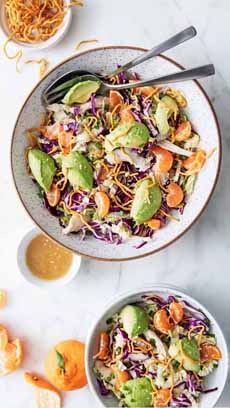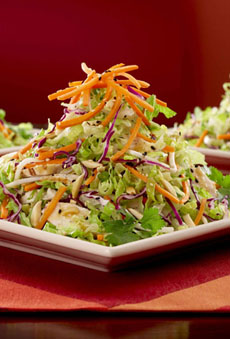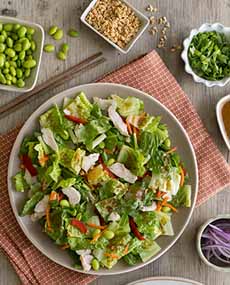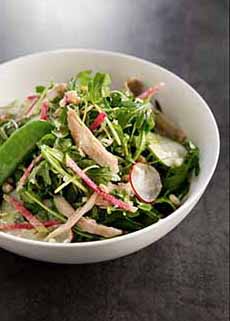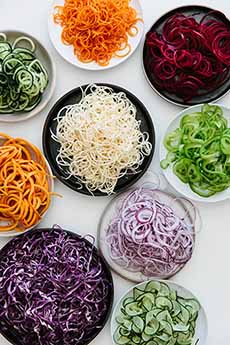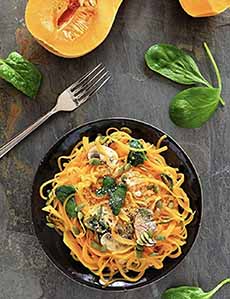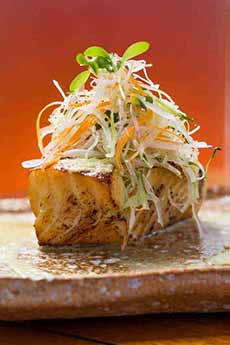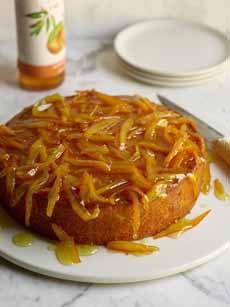|
Do you have the winter produce blahs? Do you miss stone fruits, honeydew and affordable berries?
Brian Klonoski, Content Marketing Manager at Good Eggs—an outstanding grocery delivery service in the Bay Area—shares his recommendations with us. He calls them superfoods (see more below).
Bay Area consumers are especially lucky to have the country’s greatest wealth of produce.
California has a unique fruit-and-vegetable growing climate and can grow many different types of vegetable crops throughout the year. Crops are classified as warm season or cool season crops.
Cool season crops are those that produce the best quality when the average temperatures are 55°F to 75°F, and are usually tolerant of slight frosts. These include root vegetables such as beets, carrots, parsnips, radishes and turnips; stem vegetables such as asparagus and white potatoes; leafy crops such as cabbage, celery, lettuce, onion and spinach; and plants whose immature flower parts we eat, such as broccoli, cauliflower and globe artichokes.
Warm season crops are crops that grow best when the days are long and hot, between 65°F and 95°F. These include crops with mature fruit such as tomatoes, cantaloupe, winter squash and watermelon, and immature fruits such as corn, snap beans and squash.
Fortunately for the rest of us, California exports its produce across the country. That’s why you can buy a watermelon in the middle of January [source].
TRY SOMETHING NEW
Below are some in-season fruits and veggies that may not be part of your normal shopping list. Try them!
Looking for some more traditional options? While serving sides of sweet potatoes, carrots and kale may not be as novel as stinging nettles, if you like them, eat them.
The most important thing is that you eat your daily quota of 2-4 servings of fruit, and 3-5 servings of vegetables. Why?
USDA researchers found that longer life came from eating them.
Note that many servings are 1/2 cup, so if you eat a cup of say, spinach or salad greens, that counts for two portions [source].
WHAT ARE SUPERFOODS?
“Superfood” is a marketing term, rather than a government- or medically-defined group of foods. There are no set criteria for determining what is and what is not a superfood [source].
The term, which dates back to the early 20th century, became a buzzword around 2011. It refers to certain fruits and vegetables, plus other foods like beans, nuts and salmon, that are rich in vitamins, minerals and and antioxidants.
Antioxidants are thought to ward off cancer. Phytochemicals—the chemicals in plants responsible for deep colors—are a large category of antioxidants.
Healthy fats, thought to prevent heart disease.
Fiber is thought to prevent diabetes and digestive problems.
TRY SOMETHING NEW
Here are Good Eggs suggestions for foods to try.
Fruits
Cape Gooseberries
A close relative of tomatillos, Cape gooseberries are tart and covered in a papery husk. But their sweetness is more akin to a strawberry or pineapple. They are packed with beta-carotene, fiber, potassium and vitamin A and C.
Cape Gooseberries are usually eaten raw: chopped and added to salsas, dipped in chocolate, or served Caprese-style, with burrata or mozzarella, basil and balsamic vinegar.
Here’s more information, plus recipes.
Kiwifruit
These sweet tropical fruits are in season for a short time in California, but New Zealand fills in the year-round supply. Kiwifruit—kiwi for short—has twice as much vitamin C as oranges, and are loaded with minerals and antioxidants.
The fuzzy skin, similar to a peach, is edible and a good source of fiber, as does the flesh inside. Add them to fruit and green salads, smoothies, chutneys and sauces. Or just fruit one in half and scoop out the flesh with a spoon.
If you come across Golden Kiwifruit, grab a handful. We think they’re even more delicious. Here’s more about them.
Pomelos
Pomelos are similar to grapefruits, but sweeter and milder. Different varieties all with distinct flavors. The Tahitian Sarawak pomelo, for example, is sweet and lime-like; others are more like grapefruit, since grapefruit is a cross of a pomelo and a sweet orange.
A single serving of pomelo has nearly double the recommended daily amount of vitamin C, along with a high in fiber and potassium content. Use them as you would grapefruit. You can even peel pomelos like oranges for a snack.
Here’s more about them.
VEGETABLES
King Trumpet Mushrooms
A favorite of chefs for their depth of meaty flavor, king trumpet mushrooms are packed with nutrients. Nearly a third of their calories come from protein, and they’re a great source of vitamins and minerals.
Like other larger mushrooms, They can be sautéed, tossed in oil and grilled, or added to braises and stews. The stems are just as tasty as the caps. They can be sliced into salads or sauces, or cut into “scallops” and sautéed like them.
Here’s more about them.
Microgreens
Microgreens may seen like an elitist garnish served at fine restaurants, but our local poke join tops poke bowls with delightfully flavorful radish microgreens.
Microgreens are nutritional powerhouses that are just as delightful on home meals. Aromatic, crisp, and surprisingly flavorful, they can can be garnish just about anything: avocado toast, eggs, meat and fish, pizzas, salads, sandwiches and burgers, even tacos.
Microgreens have up to 40 times more vitamins, minerals, and antioxidants than mature vegetables.
Here’s more about microgreens.
Spigariello (Leaf Broccoli)
A high-antioxidant brassica like broccoli and cauliflower, spigariello is sweet, peppery and more tender than kale. It is often compared to broccoli rabe, but less widely available.
It’s worth hunting down: Spigariello is a terrific source of vitamins, minerals and amino acids. Like most greens, it’s easy to work into your meals.
Sauté spigariello in olive oil with garlic and red chili flakes, braise it in stock, add it to soups, or eat it raw on pizzas, sandwiches, and salads.
Here’s more about it.
Stinging Nettles
While you need to use gloves when cutting the stingers from raw nettles, the cooked result (they must be cooked!) is worth it. The flavor is similar to spinach, but earthier and nuttier.
These greens are rich in calcium, iron, potassium, and vitamins A and C, and up to 25 percent protein by dry weight. Sautéing them in butter, add them to marinara sauce or to soups and stews, and fold them into eggs. Cooked nettles also make a delicious pesto or salsa verde.
Here’s more about them.
Food for thought?
|
|
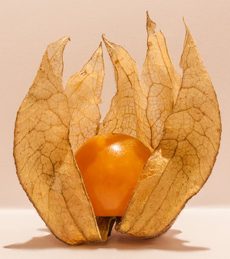
[1] Cape Gooseberry, kin to the tomatillo (photo © Rose Jones | Flickr).
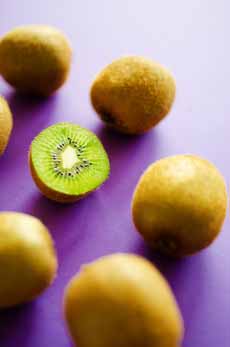
[2] Kiwifruit. Here’s more about them from Live Eat Learn (photo © Live Eat Learn).
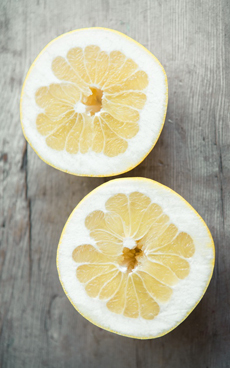
[3] Sarawok Tahitian pomelo (photo © Good Eggs).

[4] King Trumpet mushrooms (photo © The Nibble).
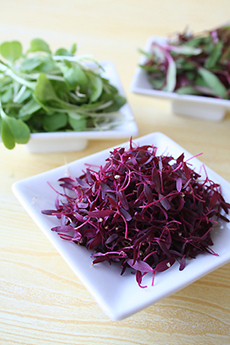
[5] Microgreens: red amaranth, red mustard and beet tops (photo © The Nibble).
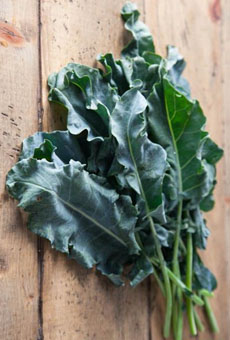
[6] Spigariello, leaf broccoli (photo © Good Eggs).

[7] Stinging nettles (photo © Good Eggs).
|
